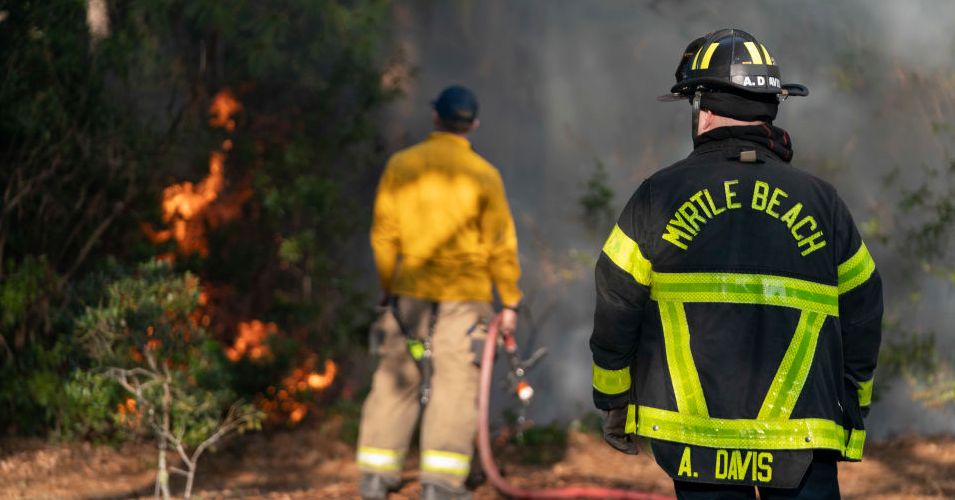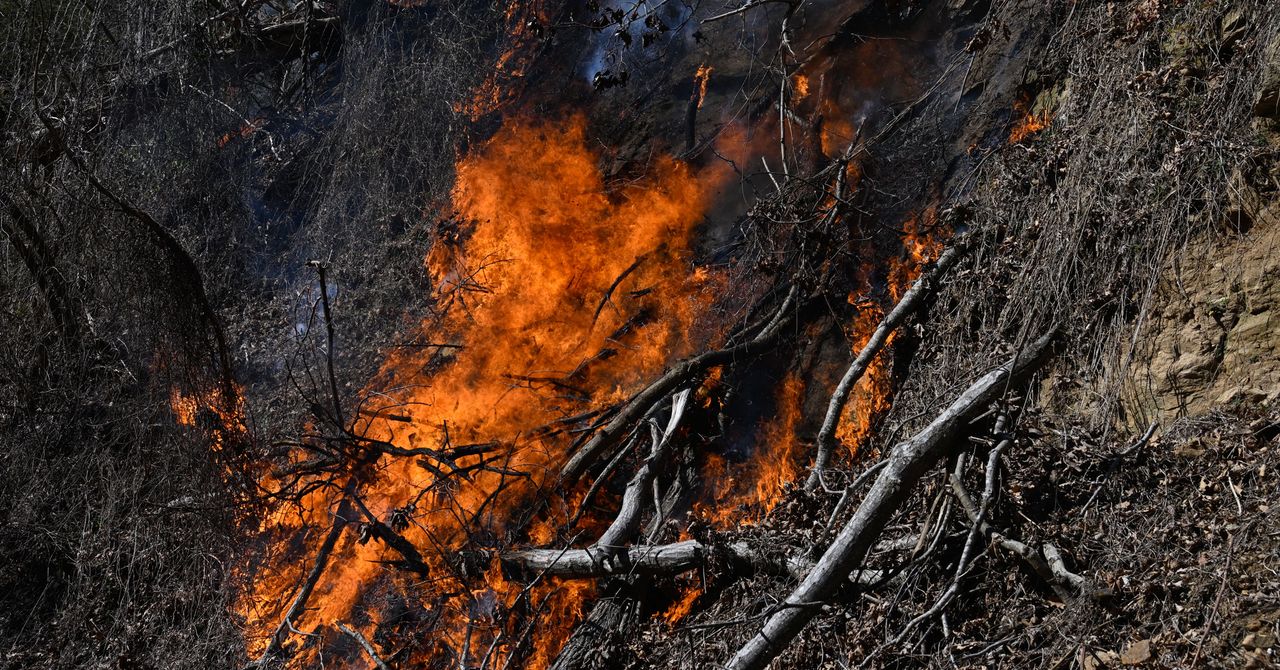Dozens of other fires occurred in Georgia and North Western Carolina, both of which were hard by the Helen Storm. In some areas, fallen trees can act as fuel and promote the fire in the short and long term, according to Virginia Iglesias.
“After the storm, many dead trees fell to the ground and this allows the sun to reach the ground,” Iglesias said. “And by doing so, if there is a combustion, it is easier to promote the fire.
The incident happened last week in the city of Polk Carolina, where firefighters tried to move between fallen trees and contain about 500 hectares in the area. These fallen trees can be a fire harassment years after the storm, especially in the southeast, where the dried pine needles are very combustible.
For example, in 2018, Michael’s storm of about 1.3 million hectares of high pine habitat in Florida Pansel, which was later dried and reduced the Bata Road fire in 2022, which burned more than 33,000 hectares.
Some fire experts are also worried that excess sunlight in this landscape can cause the growth of plants such as Rodderon and Mount Laurel in southern Apalachis, which burns severe in the event of a fire.
“And now we have obtained the full sunlight in these areas that have not been achieved before the sun’s full light,” Gary Cyde Wood, a retired North Carolina forest service worker who now coordinates fire management strategies for the southeastern area of the wild fire council. “So these things can really increase, in terms of growth, and this will have a potential effect from the firefighting perspective.”
Fight against fire
While extensive investigations have clearly shown that climate change causes a more severe fire than the west, scientists are still directly connecting the climate for goalkeepers in the southeast. But some studies show that warming creates conditions that grow fire throughout the region.
“Drought in the southeast and many other parts of the country is expected to become more and more due to climate change,” Iglesias said. According to a 2024 study, this can dramatically increase the amount of burnt forest in the southern Apalachis.
To combat this, forest managers in the area are often planned and containing a burn -known fire that helps clean the dry plants before they can fuel the larger hell. However, there are a few stripes for this strategy. More than 50 % of the 751 million hectares of forest land in the United States belong to private and these owners decide how their land is managed. This means that government agencies receive permission from homeowners before clearing down trees following a storm or burns permission in their land. Some groups embrace the fire control strategy to help homeowners in North Carolina, GRT reports.
According to a 2024 study, climate change can reduce the number of days that land managers can prescribe in the southeast. Vegetables need to be dried enough to ignite and burn, but the temperature and wind should be relatively low in order to prevent fire control – laws that are less predictable as global temperatures increase. Like fire, prescribed burns can also release air pollution, which can have a negative effect on air quality. My colleague Lee Hedgepeth covered the issue that is currently happening in Birmingham, Alabama.
At the same time, the Trump administration has funded budget and recruitment on programs that support wild firefighting in recent weeks, and has not created many parts of the country to capture large fires.




